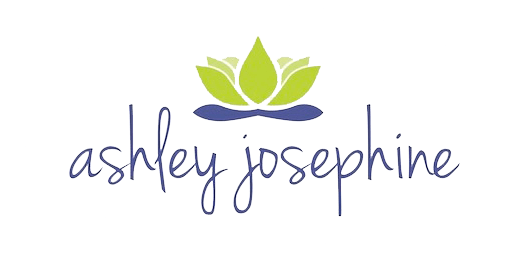When it comes to living healthy, creating habits is a surefire way to create long-lasting change. Habits are the cornerstone of routine, and routine makes all aspects of life easier.
When you step into a routine, you stop thinking about what you need to do. The brain goes on autopilot, or at least, the part of your brain that wants to argue, criticize, and second-guess shuts down. You don’t have to expend mental energy on completing your tasks because the activity is second nature.
Building healthy habits creates a positive feedback loop, too. The more you engage in a healthy activity the better you feel. The better you feel, the more motivated you are to continue living healthy. This build-up of events creates a cascade of other lifestyle changes that somehow leads to total transformation without you even realizing it. And it all starts with creating one small healthy habit.
The Three Keys to Creating or Changing a Habit
A scientific study published by Duke University found that up to 40% of the actions we take every day are habits rather then decisions.¹ That’s a large portion of your life running on autopilot!
In Charles Duhigg’s bestselling book The Power of Habit, Duhigg specifically breaks down how habits work so that readers can kick their bad habits and create new, more meaningful ones.
According to Duhigg, there are three keys to forming lasting habits.
Cue –> Routine –> Reward
First, your brain needs to know that you’re about to perform an activity, so it will look for a cue. For example, rolling out your yoga mat is a good cue to your brain that you’re about to do yoga. After the mat is on the ground, the brain doesn’t need to wonder what to do next because the most logical activity is to start performing your yoga poses.
Physical spaces or objects are often good cues, but so are sounds and actions, like a reminder on your phone. Duhigg writes that science has proven almost all cues that start a habit loop fall into one of five different categories. Those are:
- Location
- Time
- Emotional State
- Other People
- An immediate preceding action
After your brain processes the cue, you’ll move into your routine. Your routine is the set of actions you take. You might have a morning routine to get ready for the day. The cue is your alarm, and the routine might involve brushing your teeth, taking a shower, getting dressed, and making breakfast. If you do this every day and follow the same set of actions every day, eventually it will become second nature to perform these activities when your alarm goes off.
Finally, habits stick when there is a reward at the end of the cycle. The reward is important, because it helps the brain understand that the routine is worth following over and over again.
Craving Can Be A Good Thing
So how do you start building a new habit? Duhigg says you need to create a craving.
It’s not enough to want to work out. You have to create a craving for it. Your body has to crave the rush of endorphins you feel, that natural high you get, after a great workout. Your body has to crave the blissful feeling you get after your yoga class. That craving must drive your habit loop.
Of course, you might not know what the “natural high” feels like yet, so until you give your body a chance to realize how great it feels after a run, you’ll have to improvise with another reward that makes you feel great, like a piece of chocolate. (For real, science proves that rewarding yourself with chocolate after a workout will help you lose more weight then if you don’t reward yourself with a sweet treat!) Eventually you can remove the stand-in reward and your brain will still associate good feelings with the new habit because the endorphins the body produces naturally will suffice.
Get To Know Your Habits
Your brain is pretty awesome, but sometimes it has discretionary problems. It can’t tell the difference between good habits and bad habits, which is why it can be so hard to quit smoking or change other negative patterns that might have emerged in your life. The good news is if you can replace the bad habits with good ones it will be just as hard to stop drinking smoothies, taking yoga classes, and meditating!
Because we’re busy women, rather then try and create a new habit, I’d like to you look at the habits you already have. Do you have a bad habit of eating dessert after every meal automatically? Or maybe you spend a lot of time on Facebook and then find you don’t have time to go to the gym.
- What are your bad habits? List them out.
- Then choose one bad habit you’d like to change.
- Now see if you can identify the craving behind that habit. What does your body, mind, or soul really need?
- Next, experiment with the rewards that might help you satisfy your craving other then what you’re already doing. Every day for the next five days, try a new reward to get to the bottom of your craving. Write down each reward so you remember, and make a mental note of how you feel 15 minutes after your reward.
- The last step is to understand the cue. You’ve figured out the craving, you understand the routine you’re trying to change, now what is the cue that makes you start that routine in the first place? What is happening every time you start up your routine? For the next week, play detective. Notice what happens right before you engage in the activity you’re trying to change. Write it down. Where are you? What is going on around you? After a week, you’ll probably start to pick up some patterns. That’s your cue.
Habit Formation In Action
Let’s look at an example and apply the above steps theoretically so you get the hang of this exercise.
One of my bad habits is wasting time on Facebook. The craving to waste time on Facebook could stem from several things – boredom, a need for more information, a general feeling of being left out, a need for more social interaction, or even a break from thinking.
To test out different rewards, the next time I’m bored, I might try picking up a book instead of checking Facebook. If I’m really craving information, then reading a book might equally fulfill that need. If not, the new routine won’t stick and I’ll be right back to checking Facebook again. Then it’s time to try a new reward for a different craving.
If we go back and look at the 5 categories most cues stem from, my cue for checking Facebook is most likely an emotional state (boredom or mental fatigue). Once I’m aware of that emotional state, the next time I feel it coming on I can be prepared to sidestep it with a new routine like reading, calling a friend, or taking a nap.
If I successfully avoid wasting time on Facebook and benefit from a nap instead, I’ll be prepared to treat myself to a manual reward, like a piece of chocolate, until the routine becomes automatic and my brain associates the restful feeling of waking up from a power nap the reward itself!
Habits Aren’t Created Overnight
Once you understand your craving, the cue, and the reward you want, you can intentionally switch up your daily routines to create a more healthy, balanced lifestyle.
It’s not always easy to identify these steps, but the time and effort put into it will pay off big time.
If you find that identifying the cues, rewards, and cravings is tough, it turns out that awareness training like meditation helps build our ability to notice and acknowledge these different triggers in our brains. Breathing exercises, guided meditation, and yoga nidra are all practices that can help you build up your awareness of how your body and mind functions.
Yoga and meditation keep getting cooler and cooler!
Remember, change does not have to mean some massive transformation here. It could be as simple as you want to drink one more glass of water a day or go to bed 10 minutes earlier.
Habits take time to master – perhaps even more then the 21-day average we see so often in health and wellness challenges. Some habits die quicker then others. And some people have an easier time changing or creating new habits then others.
Be patient (I know, not the easiest thing in the world), and have faith. Do these exercises and keep up the good work.
Remember the habit loop: Cue –> Routine –> Reward and you’ll be closer to lasting change before you even know it 🙂
Now you have all the information you need to create a new lasting healthy habit! So what bad habit do you want to change? Let me know over on the Ashley Josephine Wellness Facebook page!
Click here for the next post in this series: Ritualize Your Wellness.
¹This statistic comes from Charles Duhigg’s book The Power of Habit






